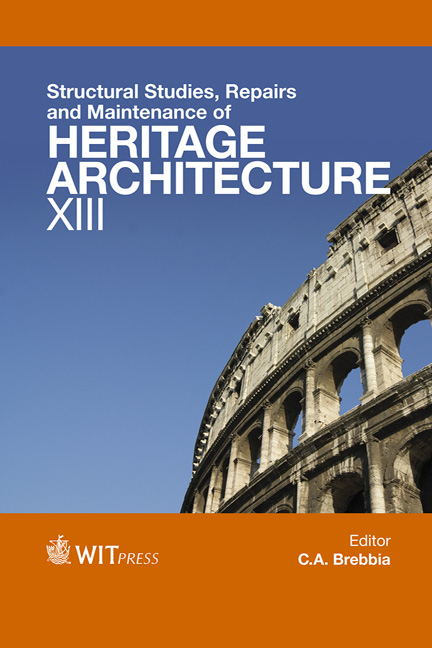Study Of Hydraulic Lime Grout Injections In Different Porous Media: An Experimental Study
Price
Free (open access)
Transaction
Volume
131
Pages
12
Page Range
431 - 442
Published
2013
Size
494 kb
Paper DOI
10.2495/STR130361
Copyright
WIT Press
Author(s)
F. Jorne & F. M. A. Henriques
Abstract
Grout injection is a widely used technique for masonry consolidation of multileaves masonries, aimed at increasing the compactness and to create links between the internal and external leaves that will improve shear, flexural and compressive resistances. The lack of information about the performance of hydraulic lime based grouts as a function of the porous media to be injected enhances the importance of a detailed research on the subject. Since it is hard to reproduce real masonry and because it is difficult to visualize what is happening inside the porous media being injected by grout, masonry samples were created by filling plexiglass cylinders with a fraction of limestone sands and crushed bricks. These materials are sieved to obtain different grain size distributions to enable the simulation of different permeabilities and internal structures for the masonry. The flow of the grout through the masonry depends on the fresh grout properties, such as stability, water retention and a rheological behaviour. Thus, the evaluation of the performance of the grout as function of porous media is firstly started by checking the intrinsic rheological properties of grout and then by controlling the injectability of masonry by injection tests on cylinders. Keywords: grout injection technique, multi-leaves masonry, limestone porous media, brick porous media, water absorption coefficient, hydraulic lime grouts, rheological properties, injectability tests.
Keywords
Keywords: grout injection technique, multi-leaves masonry, limestone porous media, brick porous media, water absorption coefficient, hydraulic lime grouts, rheological properties, injectability tests.




